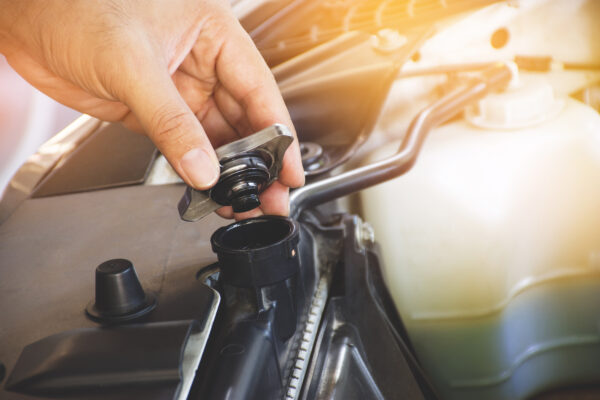OEMs (original equipment manufacturers) and their dealerships have a longstanding partnership that has built a robust automotive industry in the United States. The ideal state is to have OEMs work with their dealerships to sell genuine OEM parts, which would benefit not only the OEMs and dealerships but also the customer’s automotive experience.
However, full collaboration and seamless customer experience as part of this OEM and dealer partnership is a goal that still has not come to fruition. How can OEMs increase dealer adoption and improve the face of the brand with which the customer will interact?
Aftermarket Firms Control Market Share with Seamless Customer Experiences
One of the main drivers that provide aftermarket firms with so much success in their market is that they take advantage of the commerce and technology gaps between OEMs and dealers. Even though the aftermarket firms cannot compete with the fitment or warranty advantages of OEM genuine parts, offering a smoother commerce experience with quicker delivery takes market share from OEMs and their dealers.
Customers will choose these aftermarket firms because the technology and commerce gap between OEMs and dealers causes a lack of consistency in presentation and functionality. Most OEMs and dealerships have disjointed commerce platforms, whether because of outdated versions of a technology platform or siloed platforms.
What Will It Take to Win Dealers Over with OEM Parts Programs?
To compete with aftermarket firms, OEMs must align with dealers and win them over with their brand parts programs. The key to success here is to fundamentally understand exactly what dealers prioritize. Dealers are going to look at three things to judge whether to engage in an OEM parts program:
- The overall cost of the program and ROI
- Overall sales impact and lift directly from the program
- The success of other dealerships using this program
An OEM parts program must have a hallmark of simplicity in terms of the approach to commerce. It should simplify the employees’ work at the dealership, not make it harder. The program must also be straightforward to consumers in identifying the correct part and being able to transact quickly. Finally, the parts program needs to be aligned with customer shopping habits. Overall, customers today make 30% of their purchases online, and that is even higher for people shopping for auto parts.
Now, Let’s Win Over Customers
OEMs once competed on their engineering capabilities: driving performance and vehicle features were once touted. These qualities still matter, but they are table stakes. The new battleground is customer experience both online and at dealerships. Today’s automotive shopper explores 12 brands, considers 6 brands, and will decide between 2 brands, demonstrating how important it is to create lifetime value. Today’s best-in-class D2C and B2B service leaders master customer loyalty to boost client spending all the while reducing costs through greater efficiency.
One of the biggest challenges for both OEMs and dealers, however, is implementing a robust and unified commerce platform that meets these customer expectations and creates lifetime value and efficiency. Further, customer lifetime value, the entire end-to-end ownership period of the customer across all channels, both in-person and digital is critical.
Most customers believe their shopping experience is just as important as the product. Faster shipping options, automated follow-ups, and an interface that makes it easy to locate and purchase parts are all essential parts of this success. OEMs will need to modernize their order management system and create scalable programs that provide every customer with easy, secure checkout options and fast delivery options.
Looking at the entire value chain, OEMs will also want to prioritize after-sales services. This kind of service will be enhanced by advancements in mobility, connected devices, and payment mechanisms. The opportunity is for OEMs to shape services, redefine ownership, and empower customers to transact according to their preferences. To achieve this, companies need an extended omnichannel integrated service perspective to continually create value.
Successful OEM Parts Programs Delight Dealers and Customers
OEMs will be successful online if they can launch their parts businesses with an eye toward long-term growth. They should not just think about selling parts to customers but rather serving a customer for a lifetime. At the dealership, the most successful dealers are well-managed and operationally efficient but also customer-focused rather than transaction-focused. Ideally, the dealer principal, general manager, and parts manager will all align on the mission of serving the customer in the best way possible – a mindset shift in the industry from transaction to lifetime value.
At Perficient, we have deep automotive experience both with OEM and dealer solutions. We also leverage the appropriate technological solutions for commerce to accelerate OEM and dealer business results and bring them a sustainable competitive advantage.
Tap into our automotive expertise to propel your parts program success.

